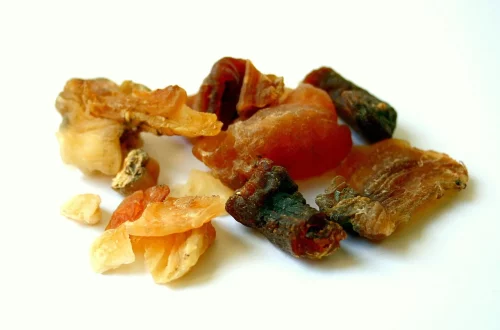
Effective Use of Salt for Fleas: A Natural Solution for Pet Owners
Fleas are tiny pests that can cause significant discomfort and distress for both pets and their owners. These resilient insects thrive in warm environments and are notorious for infesting homes, particularly during warmer months. Fleas are not just a nuisance; they can lead to serious health issues for pets, including allergic reactions, skin infections, and even anemia in severe cases. The challenge of managing flea infestations has propelled many pet owners to seek out natural remedies that are both safe and effective.
Among the various home remedies, salt stands out as a surprisingly potent solution. Its natural desiccating properties make it an effective agent against fleas, disrupting their life cycle and ultimately eliminating them from your living space. The use of salt as a flea treatment is not only cost-effective but also avoids the harsh chemicals often found in commercial pest control products. This makes it an attractive option for pet owners looking for a gentle yet effective way to protect their furry friends from these unwelcome invaders.
Understanding how to effectively use salt for flea control can empower pet owners to take charge of their pest problems while ensuring the safety and well-being of their pets. Now, let’s explore the various methods and techniques that can harness the power of salt in combating fleas.
Understanding How Salt Affects Fleas
Salt operates as a natural desiccant, meaning it can draw moisture out of its surroundings. Fleas, like many insects, rely on moisture to survive. When exposed to salt, fleas lose their ability to retain water, leading to dehydration and death. This mechanism makes salt particularly effective in disrupting the flea life cycle, which includes eggs, larvae, pupae, and adult fleas.
To understand its effectiveness, it’s important to consider the various stages of a flea’s life cycle. Adult fleas lay eggs in the environment, often in pet bedding, carpets, and upholstery. These eggs can hatch into larvae, which then pupate before emerging as adults. Salt can be used at different stages of this cycle to help control the population.
When applied to areas where fleas are likely to reside, salt can effectively kill adult fleas while also dehydrating their eggs and larvae. This dual action significantly reduces the likelihood of a flea infestation reoccurring. Additionally, salt can penetrate into crevices and fibers, ensuring that even hidden fleas are targeted.
For optimal results, it’s recommended to use fine sea salt or table salt, as these types can easily settle into carpets and other fabrics. When using salt in your home, it’s crucial to apply it evenly and generously in the areas where fleas are suspected. After application, leaving the salt on the surface for at least 24 hours allows it sufficient time to work its magic.
Once the time has elapsed, vacuuming thoroughly is essential to remove both the salt and the dead fleas. This not only helps in cleaning up the area but also prevents any potential resurgence of fleas. Regular treatment with salt can serve as a preventive measure, especially in homes with pets prone to flea infestations.
How to Apply Salt for Flea Control
Applying salt for flea control is a straightforward process that requires minimal preparation and effort. The first step is to identify the areas in your home where fleas are likely to inhabit. Common hotspots include pet bedding, carpets, rugs, and upholstered furniture.
Once you’ve pinpointed these areas, gather your materials. You will need salt—either table salt or sea salt will do—along with a vacuum cleaner for cleanup. It’s also helpful to have a broom or soft brush on hand to spread the salt evenly.
To begin, sprinkle a generous amount of salt over the affected areas. For carpets and rugs, use an even motion to ensure that the salt reaches deep into the fibers. Consider using a broom or brush to help work the salt into the material, as this will enhance its effectiveness. For pet bedding, make sure to cover the entire surface, including any seams or folds where fleas may be hiding.
After applying the salt, it’s essential to let it sit for at least 24 hours. This waiting period allows the salt to absorb moisture and effectively dehydrate any fleas, eggs, or larvae present. During this time, try to keep pets and children away from the treated areas, as a precaution.
After the waiting period, vacuum thoroughly to remove the salt and any dead fleas. Be sure to dispose of the vacuum bag or empty the canister outside to prevent any remaining fleas from re-entering your home. It’s advisable to repeat this process regularly, especially during peak flea season, to maintain a flea-free environment.
In addition to direct application, salt can also be mixed with other natural flea deterrents, such as baking soda or essential oils, to enhance its effectiveness. However, always exercise caution when using essential oils around pets, as some can be harmful.
Preventive Measures to Keep Fleas at Bay
While using salt can effectively manage existing flea infestations, prevention is crucial in ensuring that your home remains flea-free. Implementing a comprehensive flea prevention strategy can save you time, money, and stress in the long run.
Regular grooming of your pets is a fundamental step in flea prevention. Brushing your pets frequently helps remove any fleas or eggs before they have a chance to infest your home. Consider using a fine-toothed comb specifically designed for flea removal, and always check your pets for signs of fleas, such as excessive scratching or biting.
Maintaining a clean living environment is another essential aspect of flea prevention. Regular vacuuming of carpets, rugs, and upholstery helps remove any potential flea eggs and larvae. Pay special attention to corners, baseboards, and areas where your pets spend the most time. Washing pet bedding and blankets regularly in hot water can also eliminate fleas and their eggs.
Additionally, consider using natural deterrents in your home. In addition to salt, diatomaceous earth is another natural product that can help keep fleas at bay. This powdery substance is non-toxic and can be sprinkled in areas where fleas are likely to hide. Always ensure that any natural remedies you use are safe for your pets.
Lastly, keeping your yard tidy can also help reduce the risk of fleas. Regularly mowing your lawn, trimming bushes, and clearing debris can limit the outdoor habitat for fleas. If your pets spend time outdoors, consider treating your yard with natural flea repellents, such as nematodes, which are beneficial insects that prey on flea larvae.
By combining these preventive measures with the effective use of salt, pet owners can successfully keep fleas at bay and ensure a comfortable living environment for their beloved companions.
**Disclaimer:** This article is not intended as medical advice. If you have health concerns regarding flea infestations or your pet’s health, consult a veterinarian for professional guidance.




